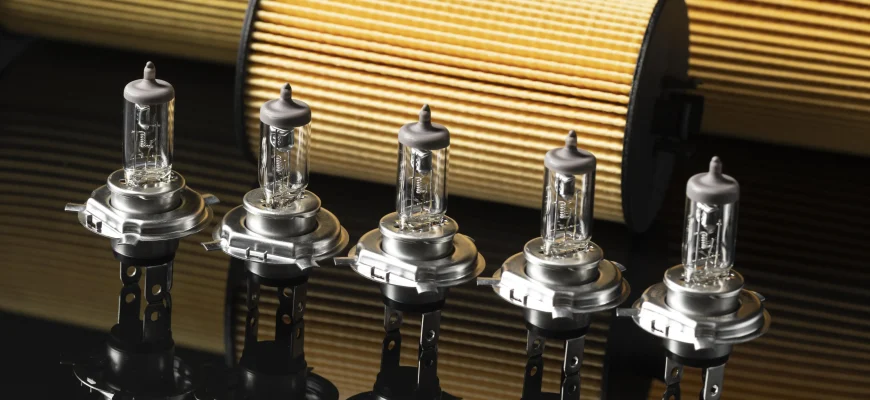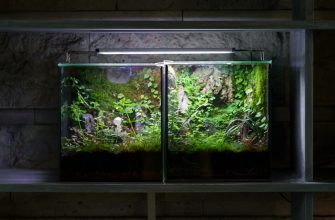What is halogen lighting?
A halogen lamp is one of the most efficient types of lighting that opens up great opportunities for making important technical decisions, such as improving lighting quality, increasing energy efficiency, and reducing energy costs. It emits a pleasant white light with warm colors. Its spectrum is very close to the sun’s, so this light is not harmful to human eyes and does not cause fatigue.
The design of a halogen lamp is very simple. It consists of a glass bulb. Most often, it is a bulb of the same size as a traditional light bulb. Inside it is a filament, which is placed in a smaller flask containing halogen gases. In fact, it is a mixture of inert gas with iodine or bromine elements.
The presence of such gases allows to increase the incandescent temperature, which increases the efficiency of the luminaire, in particular:
- the luminous flux becomes stronger;
- service life increases by several thousand hours.
In other words, with the same power consumption as an incandescent lamp, a halogen lamp provides much more light, and the lighting becomes better. It also allows for a higher color rendering. Such a wide range of possibilities expands the scope of its application. For example, powerful halogens are used in floodlights in lighting equipment for parties or film shootings.
Performance characteristics
A halogen lamp provides a more stable light output, which extends its service life compared to traditional incandescent lamps. The use of gas prevents the walls of the bulb from heating up and blackening, which allows it to be produced in a more compact size. Today, the lighting market offers models of halogen lamps of the smallest sizes, such as compact GU4 lamps with a diameter of 35 mm or miniature G9 lamps with a length of about 45 mm.
Halogen lights are designed to operate from a network with direct or alternating current, the frequency of which should not exceed 50 Hertz. The voltage range is usually 220-230 W, but there are models that require 380 W. The average service life ranges from 400 to 2000 hours of continuous operation, depending on the model.
There are a few peculiarities to keep in mind during operation. The high temperature inside makes the glass quite hot, so you should avoid contact with flammable materials. At the same time, manufacturers today create bulbs from durable materials that reduce the level of heat transfer. The overall characteristics of halogen lamps are lower than those of a classic incandescent lamp, which allows for increased pressure inside the bulb and increased lighting efficiency.
Types of halogen lamps and tips for choosing them
The modern market of electrical goods offers a wide range of halogen lamps: different shapes, connection methods and colors. All models can be classified as follows:
- With reflectors;
- Linear;
- Mains voltage;
- Finger-type.
Each type has its own characteristics, and in order to make the right choice, it is worth considering their description and technical characteristics:
Lamps with reflectors
Lamps with reflectors are quite common. The inner walls of the bulb have a reflector that scatters light from the filament. Different materials can be used as a reflector, most often aluminum. The reflector directs the light fluxes forward, reflecting infrared rays well, while consuming little electricity.
Linear models
Linear models are oblong structures made of quartz. The filament is located along the entire length of the tube, and the illuminator has taps on both sides. Linear models are very powerful and provide high brightness. They are often used to illuminate large open areas, stages, sports fields and industrial facilities. Recently, special attention has been paid to the strength of the housing to avoid damage during operation, which allows them to be installed in places where close contact with people is possible.
Mains voltage lamps
Mains voltage lamps look similar to a traditional light bulb, but their size is usually smaller. This type of light has a mini linear model that is placed in a glass bulb. The glass can be clear or tinted, and the shape of the lamp can vary.
Finger lamps
Finger lamps are compact, capsule-shaped illuminators with leads. They are decorative in nature and are rarely used for basic lighting. Their small size and low power consumption make them interesting to use. An important feature of such models is the presence of a fuse that protects the lamp.
Choosing halogen lamps
Halogen lighting fixtures can have different types of bases, including traditional E14 and E27, as well as small MR bases that require connection through a transformer, and models with a GU base that can be directly connected to the mains. When choosing a halogen lamp, you should be guided by its wattage, quality and the area of illumination it provides.








